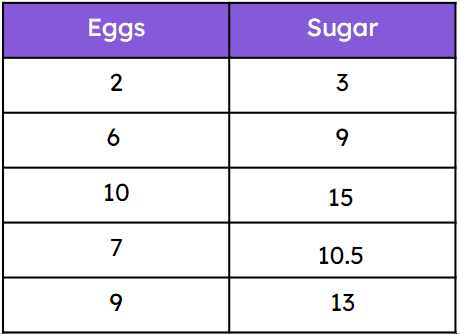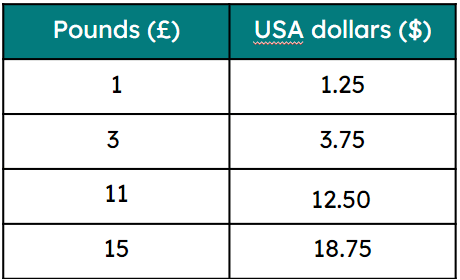Myths about teaching can hold you back
- Year 7
Multiplicative relationships in context
I can appreciate that any two numbers can be connected via a multiplicative relationship.
- Year 7
Multiplicative relationships in context
I can appreciate that any two numbers can be connected via a multiplicative relationship.
These resources were made for remote use during the pandemic, not classroom teaching.
Switch to our new teaching resources now - designed by teachers and leading subject experts, and tested in classrooms.
Lesson details
Key learning points
- A multiplicative relationship is a proportional relationship.
- Real-life contexts include converting money.
- This multiplier can be thought of as a scaling factor.
Keywords
Ratio - A ratio shows the relative sizes of 2 or more values and allows you to compare a part with another part in a whole.
Common misconception
Only seeing multiplication as repeated addition leads to incorrect additive strategies for ratios.
Focus on the multiplicative relationships between parts to whole or whole to parts. Ratios allow the multiplicative relationship to be seen.
To help you plan your year 7 maths lesson on: Multiplicative relationships in context, download all teaching resources for free and adapt to suit your pupils' needs...
To help you plan your year 7 maths lesson on: Multiplicative relationships in context, download all teaching resources for free and adapt to suit your pupils' needs.
The starter quiz will activate and check your pupils' prior knowledge, with versions available both with and without answers in PDF format.
We use learning cycles to break down learning into key concepts or ideas linked to the learning outcome. Each learning cycle features explanations with checks for understanding and practice tasks with feedback. All of this is found in our slide decks, ready for you to download and edit. The practice tasks are also available as printable worksheets and some lessons have additional materials with extra material you might need for teaching the lesson.
The assessment exit quiz will test your pupils' understanding of the key learning points.
Our video is a tool for planning, showing how other teachers might teach the lesson, offering helpful tips, modelled explanations and inspiration for your own delivery in the classroom. Plus, you can set it as homework or revision for pupils and keep their learning on track by sharing an online pupil version of this lesson.
Explore more key stage 3 maths lessons from the Understanding multiplicative relationships: fractions and ratio unit, dive into the full secondary maths curriculum, or learn more about lesson planning.

Equipment
Licence
Prior knowledge starter quiz
6 Questions
Q1.Here is a ratio table showing how to make a smoothie. Select which of the following multiplicative relationships show this ratio.

Q2.Here is a ratio table showing the ratio between eggs and sugar in a pudding. For every 2 parts eggs, there are 3 parts sugar in the pudding. Which of the rows is incorrect?

Q3.Work out how many slices of apple are needed to make 12 smoothies if 8 slices of apple are needed for 1 smoothie.
Q4.The ratio table can be used to make a cake. How many bananas are needed when 600 g of sugar is used?

Q5.The ratio table can be used to make some cakes. Sofia uses 15 eggs to make some cakes for the school fete. Sofia should use g of flour.

Q6.The ratio table can be used to make some cakes. Andeep uses 1 kg of flour to make some cakes for the school fete. Andeep should use eggs.

Assessment exit quiz
6 Questions
Q1.This multiplicative relationship applies to lots of real life contexts. Select which of the following show real life use of ratio.
Q2.For every £2, you get $3. This means for every £1, you receive $ .
Q3.To make vegetable soup, Jun needs 8 carrots, 4 potatoes, 200 ml water and 2 stock cubes. Jun has 23 carrots, 10 potatoes, 600 ml of water and 5 stock cubes. What must be added for the correct ratio?
Q4.Here is a ratio table showing the conversion from pounds (£) to USA dollars ($). Select the incorrect ratio.



